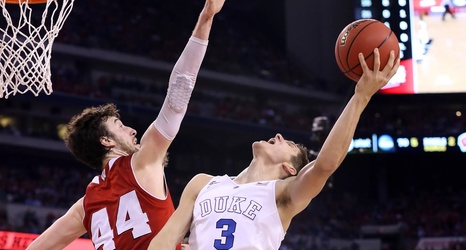

By several metrics, there was no better time to be on offense in NBA history.Īcross the league, 36.7% of three-point attempts were made to tie the league’s all-time high for accuracy. Road teams produced an effective field goal percentage of 49.2% in “clutch” situations, only two percentage points less than home teams, according to a league analysis. Some league observers believed the lack of fans would level the playing field and, indeed, home teams’ 54.3% winning percentage during the regular season is the lowest in NBA history. That’s why we play basketball, too, to get this connection in this moment, those moments with the fans.” “It’s 10 guys playing on court with 20,000 people cheering in the stands. “This is what basketball is all about,” Clippers forward Nicolas Batum said.

1 seeds, the Jazz and Philadelphia, failed to make the conference finals in the same season for only the second time since 1984.
TRAE YOUNG SHUSH FULL
He added that players enjoyed the adoption of baseball-style road series and limited interaction with media.īy mid-June, after health and safety regulations lifted across California, a full Staples Center watched as they clinched a second-round victory over Utah. “There were a couple guys that were like, ‘The bubble was easier because you had less choices to make,’” the agent said. One agent said that multiple players expressed more relief that their daily testing and observation of labyrinthine protocols was finally over when their seasons finished than frustration. Within weeks of Young’s shush, the Hawks guard hurt himself by stepping on a referee’s foot and reignited a conversation - with the Lakers’ LeBron James among the loudest voices - about how the compressed, 72-game schedule adopted by the league and players’ association might have affected player health, after 10 All-Stars missed at least one playoff game because of injury. It wasn’t the only high-profile playoff absence. To reach its first NBA Finals appearance since 1993, Phoenix had to endure two games without Chris Paul during the conference finals because the point guard reportedly tested positive for COVID-19.

Coaches, players, executives and agents described learning to live with a feeling of near-constant worry about the next virus-related disruption, waiting for Damocles’ sneaker to drop. In 2021, the future meant considering not only the next big trade or free-agency move but COVID. In recent years, the league stoked its popularity by keeping two conversations raging simultaneously - analysis of the present together with speculation about the future. There was a reason why Clippers coach Tyronn Lue’s buzzword for his team all season was “adapt.” Antetokounmpo celebrated his first championship by video chatting with his brother and Bucks teammate, Thanasis - who had missed the two previous games while isolating inside of a hotel because of COVID-related protocols. Travel restrictions at the U.S.-Canada border forced the Raptors to trade Toronto for Tampa. At least the Wizards, and 28 other teams, were able to return home. Seven Washington Wizards players tested positive during a four-day stretch in January, leading to a nearly two-week pause. The NBA also had more than 30 postponed games, lineups withered by positive COVID-19 results or contact tracing, and curious moments like the February night when Brooklyn star Kevin Durant was pulled off the court, twice, because he was deemed a close contact. The result was a new season dominated by the familiar combination of superstars, pick-and-rolls, trade rumors, three-pointers and the return of cross-country trips.


 0 kommentar(er)
0 kommentar(er)
